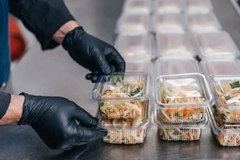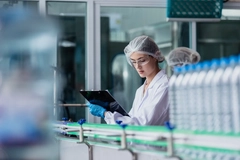Scientists engineer “green” solvent bioplastic with antimicrobial potential

23 Feb 2022 --- Brazil and Portugal-based scientists have developed an environmentally sustainable process to produce biodegradable plastic using pigment extracted from yeast by “green” solvents. In an article published in the journal Green Chemistry, the researchers show this biodegradable plastic could in the future be used in “smart” packaging with antioxidant and antimicrobial properties.
Dr. Cassamo Ussemane Mussagy from the University of São Paulo, Brazil, tells PackagingInsights: “With this work, we intend to demonstrate that it is possible to produce bioplastics through a simple and eco-friendly process by replacing conventional organic solvents with more benign equivalents, as well as with natural pigments and plasticizer agents that can be derived from renewable sources.”
With similar applications to those of conventional plastics derived from oil, gas and coal, which take hundreds of years to decompose, bioplastics produced from sugarcane, corn and potatoes are starting to become commercially available, according to the researchers.
 Carotenoids have commercial applications in the food, cosmetics and pharmaceutical industries.Shelf life enhancement
Carotenoids have commercial applications in the food, cosmetics and pharmaceutical industries.Shelf life enhancement
In terms of applicability, Mussagy says the research team believes “due to the excellent antioxidant properties of the bioplastic obtained at the end of the process, it has promising potential as packaging film to maintain the shelf life of packed fresh-cut fruits and vegetables.”
“Furthermore, the use of pigments in the formulation of bioplastics open doors in smart packaging, especially, to protect fruits or vegetables against environmental damage, as these colored bioplastics can reveal a real-time colorimetric and chemical response to any changes in the packaging conditions and food quality.”
The researchers say pigments have been used for centuries to enhance or restore the appearance of different products and guarantee uniformity.
As consumers increasingly seek healthier products while also trying not to harm the natural environment, synthetic pigments are being replaced by natural compounds that are eco-friendly and also biologically active with antioxidant and antimicrobial benefits.
Biodegradable plastic film
After more than eight years of research, the scientists demonstrate that eutectic solvents can efficiently extract two carotenoids, astaxanthin and beta-carotene, from the biomass of the yeast Phaffia rhodozyma.
Carotenoids are a class of more than 750 naturally occurring pigments synthesized by plants, algae and photosynthetic bacteria. They account for the yellow, orange and red colors of many plants. They have commercial applications in the food, cosmetics and pharmaceutical industries, among others.
According to the researchers, eutectic solvents can be used both to extract the pigments and produce biodegradable plastic film based on bioactive starch without any need for additional purification.
Finding optimal conditions
Mussagy says the main challenge of this work was to develop a fully integrated and environmentally sustainable process to obtain bioplastics. “As proof of concept, we demonstrate that it is possible to produce a natural pigment through a yeast-based bioprocess, followed by a proper integration with an extraction of these valuable natural compounds using eutectic solvents (which are a mixture of biocompatible and biodegradable components) and, then the direct use of the extracts to produce biomaterials, viz. the starch-based bioplastic.”
“The key challenge was to find the optimal conditions that would both guarantee the formation of the bioplastic, using eutectic solvents as plasticizers, and the maintenance of the biological properties of antioxidant pigments in the bioplastic,” adds Mussagy.
 Plastic pollution is a growing threat to all ecosystems.Rising alternative packaging demand
Plastic pollution is a growing threat to all ecosystems.Rising alternative packaging demand
According to some estimates brought forward by the researchers, bioplastics production will rise from 2.42 tons in 2021 to 7.59 million tons in 2026 in response to the rise in demand for alternative materials from the packaging, appliance and textile industries, as pressures increases to reduce the use of plastics derived from petroleum, owing to pollution and non-degradable waste.
Some 11 million metric tons of plastic were thrown away in 2018 in Brazil, corresponding to 13.5% of total waste in the year, and making the country the fourth-largest producer of plastic waste in the world. The estimate comes from the Brazilian edition of Plastic Atlas, published in November 2019 by Heinrich Böll Foundation, a German NGO.
Boosting bioplastic
Plastic pollution is a growing threat to all ecosystems, especially the oceans, where it accounts for 85% of total waste, according to the UN.
In future steps, the researchers plan to establish collaboration with research groups working on the development of plastics to carry out comparative studies and assess how these eutectic-based bioplastics with antioxidant properties compare to traditional virgin plastics.
They will also assess “whether these mechanical and physical properties are better, or at least equivalent, to other bioplastics already on the market,” concludes Mussagy.
By Natalie Schwertheim











